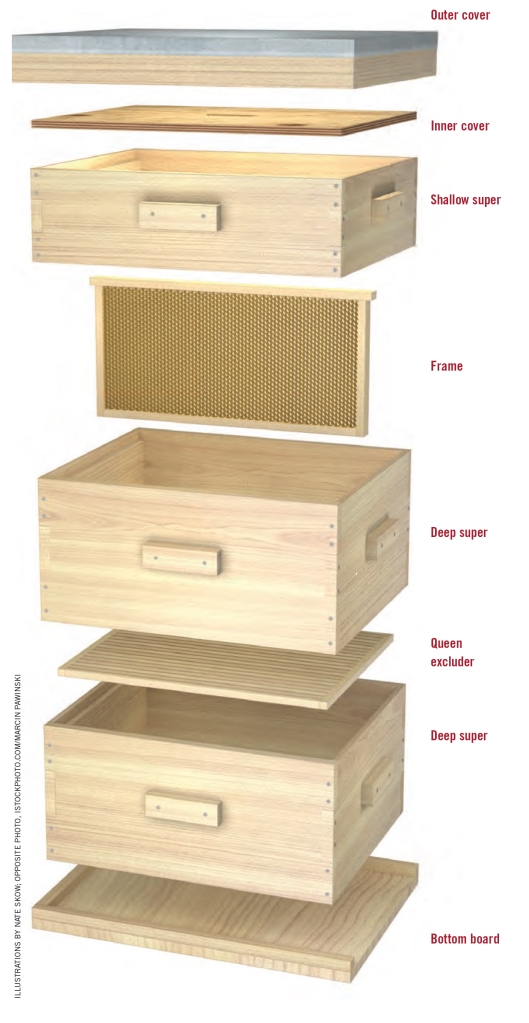With the weekend upon us, we took advantage of a calm, albeit cool, day outside to button up the hives for winter. We removed the sugar water, and installed the insulating shroud and rigid foam top on the hives.
Hive No. 1 was a little angry with all of the poking and prodding, but we got them put back together quickly.
Unfortunately as I was preparing hive No. 3 for the insulation, I didn’t notice any bees moving about. I put my ear to the hive and didn’t hear anything. Taking a chance with the cold weather, we cracked open the hive to confirm our suspicions. Hive No. 3 was empty. The hive died out basically.
We knew the hive was in trouble a few weeks ago, but with a queen and some brood, and lots of honey left, we figured they’d survive. Well they didn’t.
We pulled all the equipment off of hive No. 3 and cleaned it up. I’m going to extract the mid-sized super, 10 frames. We cleaned off all of the deep frames from the lower two boxes. One box was basically empty and the other had a decent amount of honey. Because we had treated for mite, and no telling how old, or what shape the honey was in the one deep box, we just dumped all the honey and wax scrapings into the meadow. We’ll probably have a bear problem next.
Hive No. 1 is still strong and will hopefully make it through the winter. If it gets big enough we can even try and split it next summer. We will not be buying new bees next year. We need a break from buying bees, and beekeeping in general.
One thought we had going forward was to embrace the fact that our bees will likely die out every year and start working on harvesting pollen and propolis. That sounds like a lot of work though. But at least we’d be using the whole hive when they die out.
Oh well, we have all winter to not worry about it. The bees we have are happy and there’s nothing left to do except wait for spring to arrive in the meadow.

















